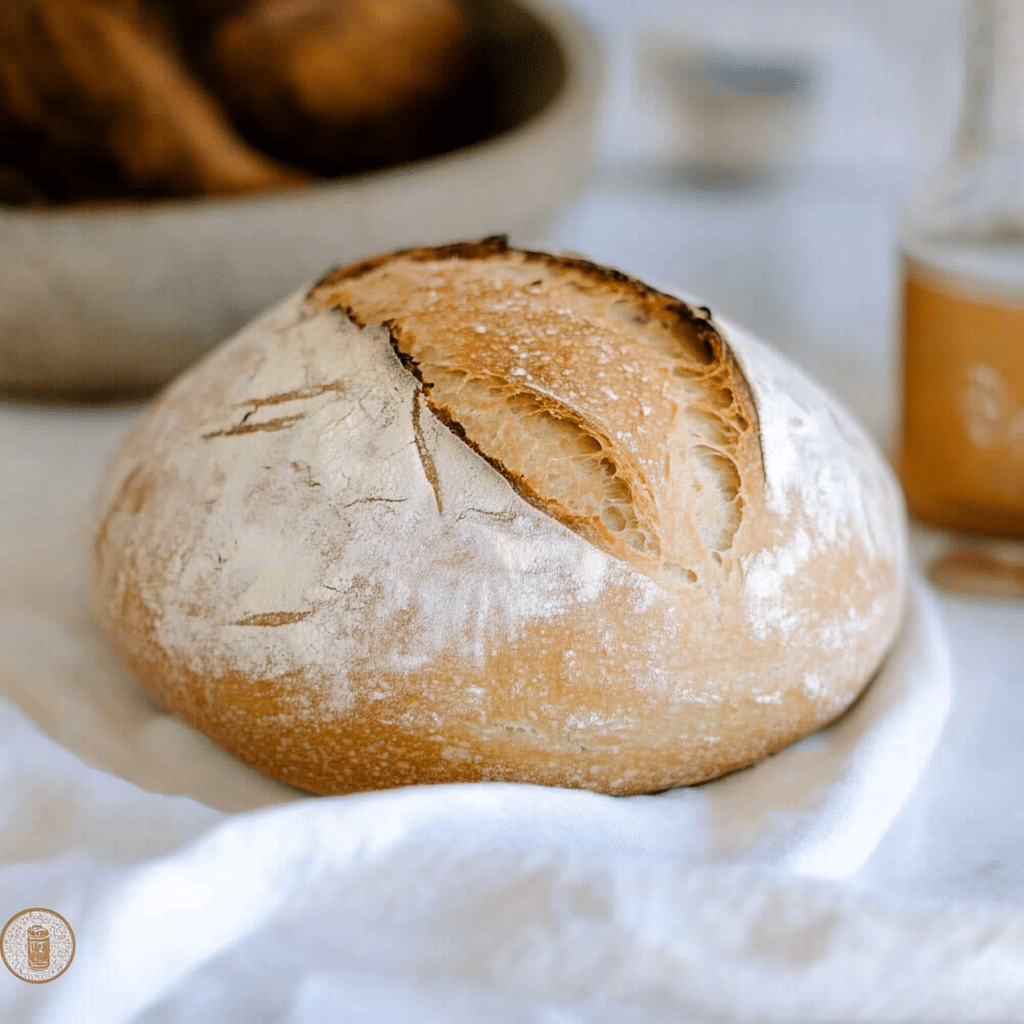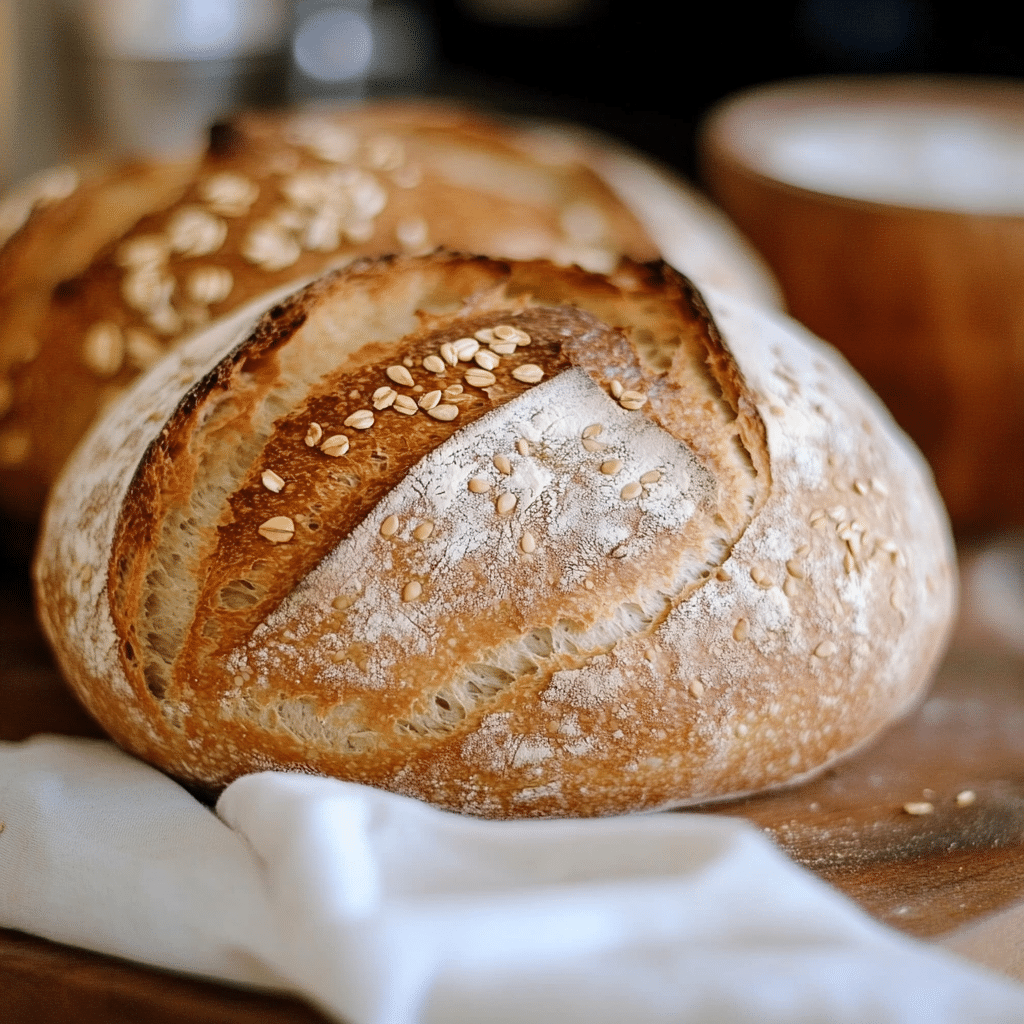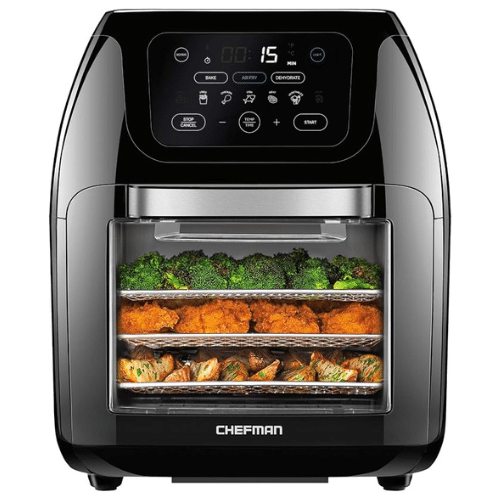Sourdough bread is a true culinary treasure that’s as rewarding to make as it is to eat. With its tangy flavor and chewy texture, homemade sourdough bread can elevate any meal. For those just starting their sourdough journey, this Beginner’s Sourdough Bread Recipe is the perfect place to start. It uses simple ingredients and a straightforward method that ensures a delicious loaf without the need for advanced techniques or specialized equipment.
The beauty of sourdough lies in the wild yeast that ferments naturally, creating a distinctive flavor profile that’s hard to beat. Once you’ve mastered the basics, you’ll be able to enjoy the satisfaction of baking your own bread with a unique flavor that no store-bought loaf can replicate. This beginner-friendly recipe is a great way to introduce yourself to the art of sourdough breadmaking, and it’s incredibly versatile for making everything from sandwiches to French toast.
Why You’ll Love This Recipe
This Beginner’s Sourdough Bread Recipe is simple yet full of flavor. The active, bubbly sourdough starter creates a bread with a perfect balance of tangy and mildly sweet flavors. The texture is chewy with a crisp crust, offering that classic sourdough bread experience. As you get the hang of the technique, you’ll appreciate how this recipe relies on just four ingredients: flour, water, salt, and your starter. The method is also forgiving—perfect for those just starting out. With a little patience and practice, you’ll soon be able to bake your own homemade sourdough that’s as good as anything from a bakery.

Disclosure: This post contains affiliate links.If you click and make a purchase, I may earn a small commission at no extra cost to you.
Ingredients
- All-purpose flour
- Active and bubbly sourdough starter
- Water
- Salt
Variations
Sourdough bread is incredibly versatile and can be easily customized to your taste:
- Add Seeds or Nuts: Stir in sunflower seeds, sesame seeds, or chopped nuts into the dough for extra texture and flavor.
- Use Whole Wheat Flour: Swap out some of the all-purpose flour for whole wheat flour to add a heartier flavor and texture.
- Add Herbs or Garlic: If you like savory bread, try adding dried herbs, minced garlic, or even a bit of cheese to the dough.
- Sweeten It: For a sweeter loaf, you can add a small amount of honey or maple syrup.
How to Make the Recipe
Step 1: Prepare the Starter
Before starting the dough, ensure your sourdough starter is active and bubbly. Feed the starter the day before you plan to bake, and wait for it to double in size, which generally takes about 4-6 hours depending on your starter’s activity.
Step 2: Mix the Dough
In a large bowl, combine the active starter with the water. Stir to dissolve the starter in the water, then add the all-purpose flour and salt. Mix with your hands or a spoon until the ingredients come together and form a shaggy dough. Be sure to scrape down the sides of the bowl as needed.
Step 3: Knead the Dough
Transfer the dough to a clean surface and knead it for about 10-15 minutes, until it becomes smooth and elastic. You can also use the “stretch and fold” method, where you stretch the dough, fold it over, and rotate it every few minutes to develop the gluten.
Step 4: Let the Dough Rise
Once kneaded, form the dough into a ball and place it in a lightly greased bowl. Cover the bowl with a damp kitchen towel or plastic wrap, and let it rise at room temperature for 4-6 hours, or until the dough has doubled in size. If you prefer, you can also refrigerate it overnight for a longer, slower fermentation.
Step 5: Shape the Dough
Once the dough has risen, turn it out onto a lightly floured surface and shape it into a round or oval loaf, depending on your preference. Tuck in the edges of the dough to form a tight seam.
Step 6: Proof the Dough
Place the shaped dough onto a piece of parchment paper or a well-floured proofing basket. Cover it again with a damp towel and allow it to proof for another 1-2 hours, until it has risen and is puffy to the touch.
Step 7: Preheat the Oven
Preheat your oven to 475°F (245°C) with a Dutch oven or baking stone inside. If you’re using a Dutch oven, be sure to let it heat up for at least 30 minutes to ensure it’s properly preheated.
Step 8: Score the Dough
Once your oven and Dutch oven are preheated, carefully transfer the dough onto the hot Dutch oven (or baking stone). Using a sharp knife or razor blade, score the top of the dough in a decorative pattern. This allows the bread to expand and bake evenly.
Step 9: Bake the Bread
Cover the Dutch oven with a lid (or use a baking sheet if you’re using a stone) and bake the bread for 20 minutes. After 20 minutes, remove the lid (or baking sheet) and continue baking for another 20-30 minutes until the bread has a golden-brown crust and sounds hollow when tapped on the bottom.
Step 10: Cool and Serve
Once baked, remove the bread from the oven and let it cool on a wire rack for at least an hour before slicing. This resting period helps the bread set and enhances its flavor.

Tips for Making the Recipe
- Use Room Temperature Ingredients: For better dough hydration and easier mixing, ensure your water and starter are at room temperature.
- Don’t Skip the Resting Period: Sourdough requires time to ferment and develop its flavor. Be patient and give the dough ample time to rise.
- Test Your Starter: Your starter should be active and bubbly. Test it by placing a spoonful of starter in a glass of water—if it floats, it’s ready to use.
- Preheat Your Dutch Oven: This helps create steam during the baking process, which results in a crusty loaf.
How to Serve
Freshly baked sourdough is perfect for a variety of meals. Serve it with butter or olive oil, slice it for sandwiches, or pair it with soups and stews. Its tangy flavor makes it a great accompaniment to cheese and charcuterie, or use it for delicious homemade French toast. The possibilities are endless!
Make Ahead and Storage
Storing Leftovers
Sourdough bread is best eaten within 2-3 days of baking, but it will stay fresh for longer if stored properly. Store it in a paper bag or a bread box to maintain its crust.
Freezing
If you want to store your sourdough for a longer period, slice the loaf and freeze the slices in a freezer-safe bag. Thaw the slices at room temperature or toast them for a quick snack.
Reheating
To reheat a whole loaf, place it in a preheated oven at 350°F (175°C) for about 10-15 minutes to refresh the crust.

FAQs
1. Can I use a different type of flour?
Yes, you can substitute some or all of the all-purpose flour with whole wheat or rye flour. However, keep in mind that different flours absorb water differently, so you may need to adjust the water content.
2. Can I use a bread machine for this recipe?
While this recipe is designed for hand kneading and baking in a Dutch oven, you can use a bread machine for the kneading process. However, the sourdough flavor is best developed through the traditional fermentation method.
3. Can I make this bread without a Dutch oven?
Yes, if you don’t have a Dutch oven, you can bake the bread on a baking stone or a baking sheet. To create steam, you can place a small pan of water in the oven while baking.
4. How do I know when my bread is done?
The bread is done when it has a golden-brown crust and sounds hollow when tapped on the bottom. You can also check the internal temperature—it should reach around 200°F (93°C).
5. Can I add more water to the dough?
If your dough feels too stiff or dry during kneading, you can add a small amount of water, a tablespoon at a time, until the dough becomes smooth and elastic.
6. How can I make my sourdough less tangy?
If you prefer a milder sourdough flavor, try reducing the fermentation time or refrigerating the dough overnight, which will slow down the fermentation process.
7. Can I use a starter that’s not homemade?
Yes, you can use a store-bought sourdough starter if you don’t have a homemade one. Just make sure it’s active and bubbly before using it.
8. Can I make sourdough without a starter?
No, you need a sourdough starter, which contains the natural yeast and bacteria needed to ferment the dough. You can make your own starter or use a purchased one.
9. What if my bread didn’t rise enough?
If your dough didn’t rise enough, it could be due to an inactive starter or insufficient proofing time. Ensure your starter is bubbly and active, and give the dough ample time to rise.
10. Can I make sourdough bread in a loaf pan?
While it’s traditional to bake sourdough on a baking stone or in a Dutch oven for a rustic look and texture, you can also bake it in a loaf pan for a more uniform, sandwich-friendly shape.
Conclusion
Making sourdough bread from scratch is a rewarding experience, and this Beginner’s Sourdough Bread Recipe is a perfect starting point. With just a few ingredients and some patience, you’ll be able to create a loaf that’s tangy, flavorful, and deliciously chewy. Whether you enjoy it as a simple slice of toast or turn it into a gourmet sandwich, this homemade sourdough will elevate any meal. Happy baking!
Print
Beginner’s Sourdough Bread Recipe
- Total Time: 6-8 hours (including rise times)
- Yield: 1 loaf (about 12 slices) 1x
- Diet: Vegetarian
Description
This easy-to-follow sourdough bread recipe is perfect for beginners. With a bubbly starter and a few basic ingredients, you’ll create a tangy and crusty homemade loaf that’s a true delight to eat.
Ingredients
- 475 grams all-purpose flour (3 1/2 cups)
- 100 grams active and bubbly sourdough starter (1/2 cup)
- 325 grams water (1 1/3 cups)
- 10 grams salt (2 teaspoons)
Instructions
- In a large bowl, combine the flour and salt.
- Add the sourdough starter and water to the dry ingredients. Stir until a rough dough forms.
- Turn the dough out onto a clean surface and knead it for 8-10 minutes, or until it is smooth and elastic.
- Place the dough into a lightly greased bowl and cover it with a damp towel or plastic wrap. Let it rest at room temperature for 4-6 hours, or until it has doubled in size.
- Once the dough has risen, punch it down gently to release the air. Shape the dough into a round loaf and place it onto a parchment-lined baking sheet or into a lightly greased Dutch oven.
- Cover the dough and allow it to rise for an additional 1-2 hours, until it has puffed up slightly.
- Preheat the oven to 450°F (232°C).
- If using a Dutch oven, place the lid on and bake for 30 minutes. If baking on a baking sheet, you can create steam in the oven by adding a tray of water at the bottom of the oven. Bake for 30-40 minutes, or until the bread is golden brown with a hollow sound when tapped on the bottom.
- Allow the bread to cool completely on a wire rack before slicing.
Notes
- For best results, ensure your sourdough starter is active and bubbly before using it in this recipe.
- You can make the dough the night before, and let it rise slowly in the fridge overnight for a more developed flavor.
- If you prefer a crustier loaf, bake the bread uncovered for the last 10-15 minutes of baking.
- Prep Time: 15 minutes
- Cook Time: 40 minutes
- Category: Bread
- Method: Baking
- Cuisine: American




